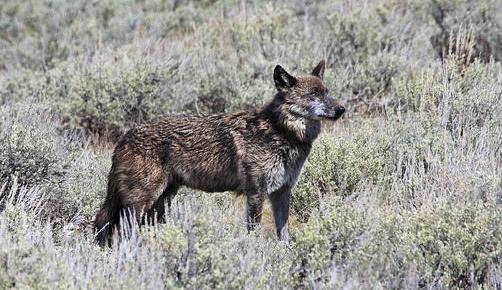
Humans have threatened animals by encroaching on their habitats, or in some cases overhunting for food. It is time for state Fish and Game Agencies need to stop the mismanagement of Our Children’s Ungulate Populations. Especially when states like Montana kill 31,000 Elk avg per year, both Wyoming and Idaho adding an Additional 26,000 Elk each that are killed each year by Hunters. Herein lies the issue, most Trophy Hunters focus on removing the strongest genes from a herd which over time will affect the genetics of the herd by weakening them.
It’s good news if an endangered species has recovered enough that it could be removed from the federal government’s protected list — but actually being removed may be a different story. The critical questions to ask are what threatened them in the first place, and whether that threat will start wiping the species out all over again.
The Trump administration announced recently that it would remove gray wolves from the most protected status. While humans have threatened other animals by encroaching on their habitats, or in some cases overhunting for food, Americans killed off most of the native wolves out of hate. In the early 20th century, Americans hated wolves so much they began a government-funded killing campaign, which included not just shooting but also poisoning and germ warfare. People purposely infected wolves with a disease called mange, which causes the animals to lose their fur and with it, their protection from the frigid winter nights in the American West.
Nobody knows how many wolves lived in the continental U.S. before all this. By the time they were named an endangered species in 1975, they were down to 1,000. Now they are up to 5,000, including a population that was reintroduced to Yellowstone National Park in the 1990s. They are doing well, but it was not an easy comeback.
In reporting on the wolf situation back in 2012, I learned that mange still affected the Yellowstone wolves, and some were infected with canine distemper as well. Last week I got back in touch with one of the experts I’d interviewed for that story — Penn State University biologist Peter Hudson, who studies ecology and infectious disease.
He said that the Yellowstone wolves are healthier now, less affected by mange or canine distemper. Their numbers are down from a peak a few years ago, he said, because they have less food. When the wolves were brought back to the area, there had been an exploding population of elk, so the food was superabundant and the wolves reproduced fast.
But the elk changed their behavior, he said, fanning out and moving to other areas. So wolf populations shrunk, and that means Yellowstone is not, as some ranchers had feared, a source of wolves that would emerge from the park and eat nearby livestock.
Ecologists hoped that wolf reintroduction would restore failing biodiversity in Yellowstone. By the early 1990s, the elk populations were eating so many willow and aspen saplings that these trees were thinning out, and there were fewer birds and other animals that depended on the trees. Some theorized that fewer trees also meant less material for beavers to build dams, which literally reshaped the landscape. Soon after the wolves arrived, people observed a rebound of biodiversity.
Hudson said the process by which wolf re-introduction would rebalance the ecology is called a trophic cascade. They haven’t yet proven scientifically that it’s happening, he said. That’s ongoing work. Understanding the consequences of wolf reintroduction is important, he said, because Yellowstone is an early example of a worldwide trend toward “rewilding” — bringing back native species, especially top predators — long after original populations had been killed off.
But whether to continue to protect wolves doesn’t depend on their ability to do us any good by, say, making Yellowstone a more interesting place. They are unique, sentient creatures that have a value in and of themselves. In assessing how much protection they still need, what matters is whether the human hatred has softened enough that they can hang on.
This column does not necessarily reflect the opinion of the editorial board or Bloomberg LP and its owners.
To contact the editor responsible for this story:
Philip Gray at philipgray@bloomberg.net
Source: Gray Wolves Are at Risk as They Leave the Endangered Species List – Bloomberg
Comments
the wolves need to stay on endangered species list, they should never be taken off!!